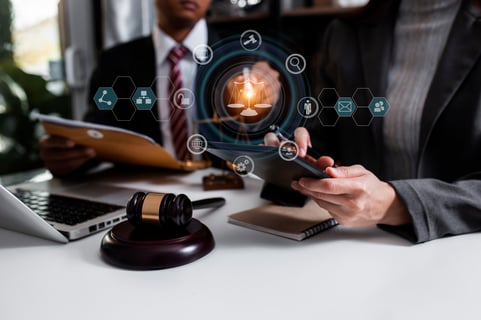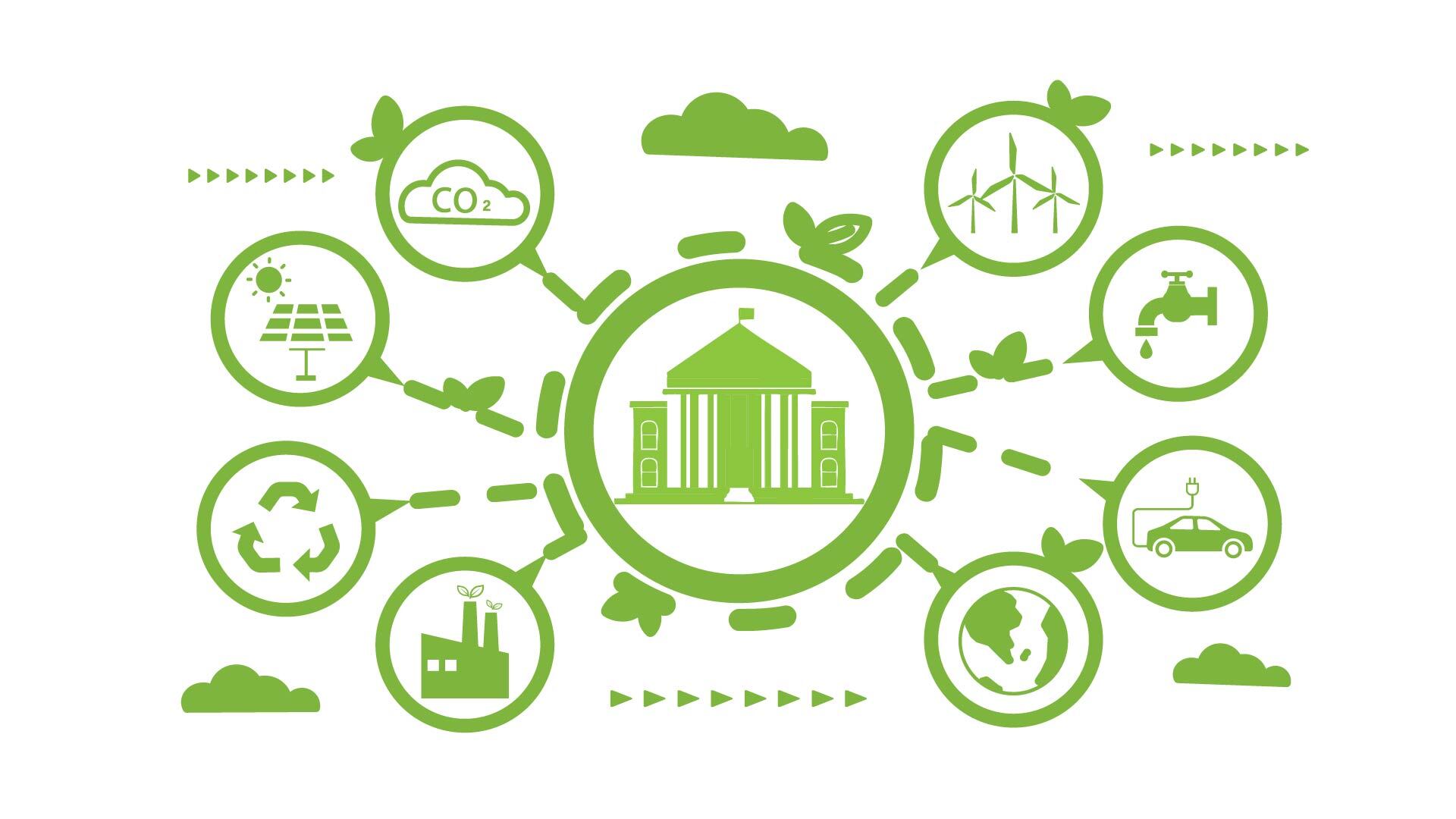The hybrid courthouse (i.e., a courthouse that provides both in-person and remote services and has a mix of in-office and remote workers) has evolved over time. The two key factors that have driven this hybrid model are technology advances and the increasing prevalence of telework. Both of these factors were accelerated during the pandemic.
Technology has enabled courts to provide many remote services, adding a level of efficiency to court operations and providing convenience for the public. And telework, which has been made possible by these advances in technology, has allowed many court employees to work remotely for part of the week and in the courthouse for the remainder of the week.
When technology and telework are maximized, courts can become more efficient and are better able to utilize existing space within the courthouse. I believe that the hybrid model is the way of the future, but it requires one key condition: the right technology must be in place. This is critical in supporting case management and courtroom proceedings, and in ensuring that employees have the resources they need to remain fully productive while teleworking.
Let’s look at some of the key technology elements that some courts have implemented, and many others would like to implement moving forward. These technologies continue to evolve to help courts provide a high level of service to promote justice and to serve the public at the highest level.
Foundational Courthouse Technology
Technology to Support Case Management
Electronic case management systems have become more sophisticated over time. They enable the electronic tracking of cases, allow staff instant access to files and information, and drastically reduce the need for paper. You no longer need to search through a musty file room for a record that is a critical part of a case. Information is now available at the push of a button. Electronic case management systems also enable staff access to information while working remotely.
Similarly, the public now has online access to court services and information. Many services are provided via the Internet or at self-service kiosks located in the lobby or elsewhere in the courthouse. Electronic court payments can also be made, which is a valuable time-saving service for the public.
Imaging and scanning have also improved efficiency and have reduced the volume of paper typically found in a courthouse. Courts that have been progressive in this area have freed up space by eliminating large file rooms. Plus, the reduction in paper allows the courthouse to be cleaned more thoroughly, which was critical during the pandemic and continues to be a high priority.
For the hybrid courthouse to operate most effectively, a court must strive to stay on top of best practices being used by other courts in the area of digital services for case management. But it is also important for courts to ensure that new technologies are fully studied and tested prior to deployment, and are implemented in a way that ensures no gap in services. It can be tempting to be caught up in the “shiny object syndrome” where new technologies are attractive but may not be the best use of resources for a particular court. Be sure to tailor any technology upgrades to the needs, culture, and budget of your court.
Technology to Support Courtroom Proceedings
Until the pandemic, most courthouses remained traditional in the sense that most proceedings took place in person. It wasn’t until COVID necessitated more remote proceedings that courts began to ask if they could acquire the technology to retain this model once the pandemic ended.
As mentioned in a previous blog on the key elements of a hybrid courthouse, some proceedings can be performed remotely. Such proceedings include pretrial hearings, status review hearings, motion hearings, small claims cases, and arraignments. Equipping courtrooms with videoconferencing capabilities can allow these proceedings to be conducted virtually or can allow a mix of in-person and remote participants.
Technologies that support videoconference proceedings include secure Internet access, flat panel displays, device control interfaces, soundbars and accessories, presentation systems, ceiling- and wall-mounted cameras, microphones, assistive listening systems, projection systems, and adequate lighting.
It is important to make proceedings not only efficient, but also appropriately accessible and equitable. Some courtrooms incorporate monitors or motorized screens that include view panels for judges, staff, witnesses, attorneys, jury members, and spectators. Others have high-tech document viewers and annotation systems. The ability to tailor how and to whom information is presented within a courtroom helps protect the integrity and efficiency of the judicial process.
 The Expanding Role of Technology in the Courthouse
The Expanding Role of Technology in the Courthouse
I recently presented at a conference that took place at the Center for Legal and Court Technology. The director was very excited as they had just received a holographic witness machine. The machine projects a life-sized image of a witness in 3D into a refrigerator-sized box in the courtroom. Although the witness is remote, the court participants can view the witness in such a way that it almost feels like the witness is in the courtroom. This is an exciting new technology that I expect will be in courtrooms in the near future.
One of the points made during the conference was the expense of courtroom technology and all the considerations that must be made when incorporating the technology into the courtroom. For example, it is important that screens should not block sightlines for the court participants. Also, the wiring must be considered and installed in a manner that avoids trip hazards and overloading the electrical capacity. Another key point was that technology changes rapidly and systems installed today may be out of date in two years and no longer supported. While the technologies can greatly help the judicial process, there are many considerations that go into selecting and installing courtroom technologies. The Center for Legal and Court Technology is a resource that can help courts learn about courtroom technologies and installation requirements.
Technology to Support Telework
While many technologies were in place prior to the pandemic, COVID forced most courts to fast-track how fully they adopted telework technologies. With the move to widespread telework, employees needed remote access to files and even to some court proceedings. Technology had to evolve and expand rapidly to keep up with this shift to a widely dispersed workforce that needed to be able to keep court operations running efficiently.
It is critical that telework employees have the equipment and remote access needed to tap into court systems. Network security must be strong to ensure that only authorized employees have access. It is also important to make sure employees have reliable equipment, including a laptop, external monitor and printer (if needed), phone, and router.
When in the office, employees should also have the right technology to do the job. If workstations are shared among remote employees, workstation and conferencing scheduling systems can help ensure that employees have the space they need when they come into the office. They should also be able to connect to the network and videoconferencing systems as needed. The last thing you want is to set an employee up for success in the home office and make their time in the office full of technology challenges.
Applying Lessons from the Pandemic to the Future
In working with court clients, I have noticed that the courts that seemed to fare best during the pandemic were those that had already embraced emerging technologies. I also noticed that a solid technology base underpins all high-functioning hybrid courthouses. Budgets need to shift to allocate more resources towards the technology infrastructure and enhancements that will help support full and efficient hybrid court operations. Otherwise, the courthouse will not be able to support the level of remote interaction and communications that take place in the hybrid environment.
We don’t know what other challenges lie ahead. But we do know that the experience of public convenience and employee expectations about the way work is conducted have shifted permanently. Just as technology evolves, the culture and operational practices of a court must evolve to face whatever challenges lie ahead. Courts that stay on top of their technology practices – or better yet, ahead of the curve – will be much better able to respond to the next challenge that comes along.



.png)



.jpg)
.jpg)
.jpg)
.jpg)
.jpg)


.jpg)
.jpg)
-1.jpg)
.jpg)
.jpg)
.jpg)
.jpg)
.jpg)

